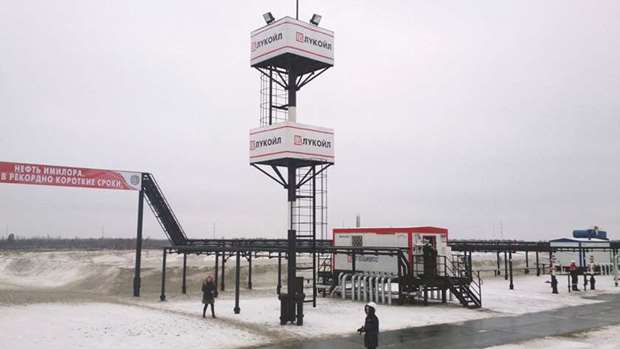Opec+ pushes on with supply boost, yet split on quotas

Bloomberg/Kuwait
Opec and its allies are raising output to keep world markets adequately supplied, yet remain divided on how much each country should produce.
During a conference call on Wednesday, oil ministers discussed how much they planned to pump in July, while side-stepping more contentious questions about production quotas, according to people familiar with the matter. Technical experts meeting the same day failed to reach a recommendation on how the supply increase should be distributed among members amid disagreements between Saudi Arabia and Iran, they said.
As far as global oil markets are concerned, the differences between the two might not matter immediately, as Saudi Arabia and Russia press on with increasing production regardless. Yet, a prolonged clash risks shattering Opec’s hard-earned cohesion after it worked with its allies to bring crude out of the biggest price-slump in a generation.
Further production increases from the Saudis are almost certainly on the way. The kingdom has told fellow producers that its output will be slightly higher this month than in June, the people said.
It had reported 10.489mn barrels a day of output for last month, not far from the record reached in 2016. Russia has also signalled it’s pumping more.
Getting a formal blessing from the Organization of Petroleum Exporting Countries for these increases is proving more difficult.
Although Opec and its partners — led by Russia — agreed to boost output last month to cool rallying prices, the size of the increase was contested. For Russia and the Saudis, it was about 1mn barrels a day. To Iran, which is seeing its exports slide amid renewed US sanctions, it was much less.
The dispute flared again at Wednesday’s committee meeting in Vienna, when Iran’s representative repeated the country’s position that output limits assigned in late 2016 still apply and countries shouldn’t exceed these, according to people familiar with the talks, who asked not to be identified as the discussions are private.
Supply increases by the Saudis and Russia are compensating for losses elsewhere in the coalition, particularly in Venezuela, and bringing the alliance closer to its target. Higher production from these two means overall compliance of Opec+ with the output levels agreed in 2016 was 121% in June compared with 147% in May, according to data from the committee.
US President Donald Trump is exacerbating the Saudi-Iran split by pressing Riyadh to replace Iranian shipments that he intends to partially shut down through sanctions. While the Saudis seem to be paying heed by offering extra cargoes to some buyers in Asia, Iran has said Opec should defy US demands.
Saudi Arabia has indicated a production level of 10.5mn barrels a day in July. That would actually be slightly lower than expected as the kingdom was on track to reach 10.8mn, people briefed with production policy said late last month.
As for whether Opec can smooth out the differences between the Saudis and Iran, settle on individual country limits, and preserve its unity, ministers will hold another teleconference next month and meet in person in Algiers in late September.